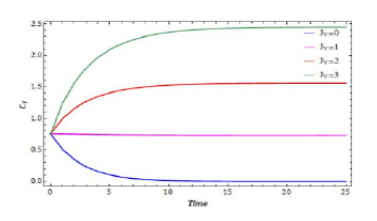


Indian Journal of Science and Technology
DOI: 10.17485/IJST/v14i48.1965
Year: 2021, Volume: 14, Issue: 48, Pages: 3509-3524
Original Article
Sindhu J Achar1*, Chandrali Baishya1
1Department of Studies and Research in Mathematics, Tumkur University, Tumkur-572103, Karnataka, India
*Corresponding Author
Email: [email protected]
Received Date:20 October 2021, Accepted Date:27 November 2021, Published Date:28 December 2021
Objectives: Climate change is a major issue the mankind is facing in the present scenario. This is a consequence of global warming that result in the change in temperature and rainfall over a long period of time. In this work, we analyze the fractional mathematical model projecting pluviculture. The Caputo fractional derivative is incorporated for better analysis of this event. Also, we discuss the boundedness, existence and uniqueness of the solutions of the proposed system. Sufficient conditions required for existence of asymptotic stability are discussed. Method: We have used the generalized Adams- Bashforth-Moulton predictor-corrector technique to solve the pluviculture model. It is the linear multistep implicit method used to solve the system of equations. Findings: It is established that, the intensity of precipitation is enhanced by introducing the aerosols to the water vapor. The incorporation of the fractional derivatives strengthens the model in a more realistic way. The influence of some parameters and fractional derivative on the rain making process are numerically analyzed. Novelty: The incorporation of Caputo fractional derivative to the pluviculture model along with the two kinds of aerosols is the novel in the model.
Keywords: Pluviculture; Aerosol; Caputo fractional derivative; AdamsBashforthMoulton technique Mathematics Subject Classification: 26A33; 92D30
© 2021 Achar & Baishya. This is an open-access article distributed under the terms of the Creative Commons Attribution License, which permits unrestricted use, distribution, and reproduction in any medium, provided the original author and source are credited.
Published By Indian Society for Education and Environment (iSee)
Subscribe now for latest articles and news.